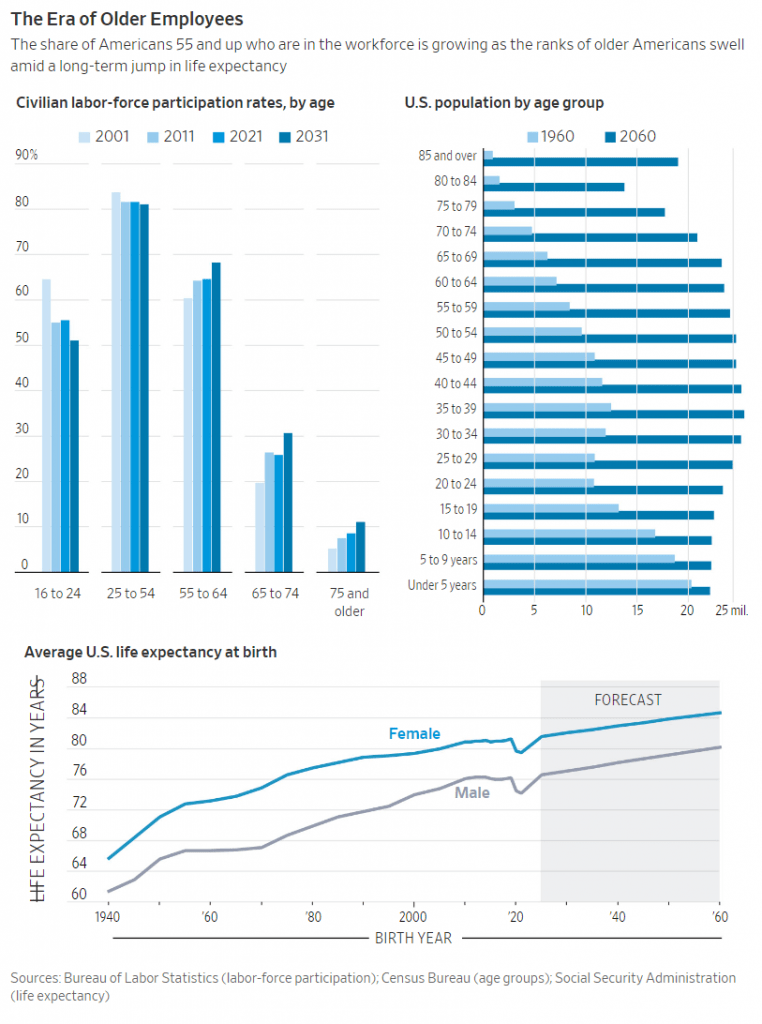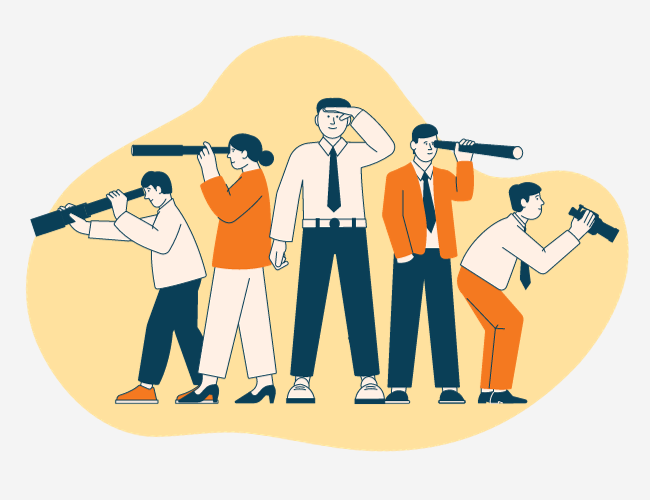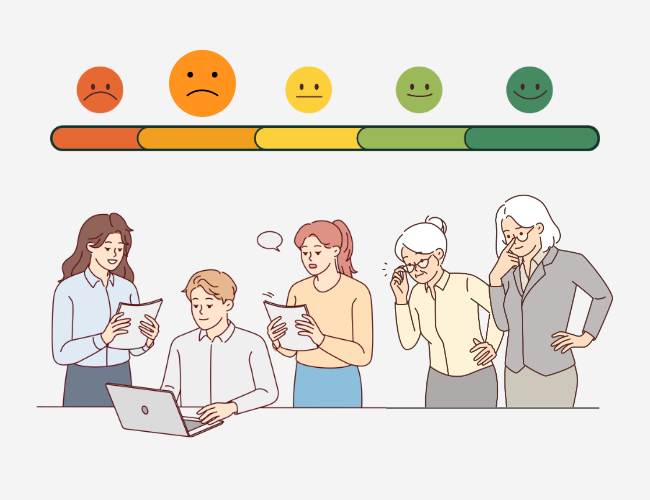Globally, the average life expectancy has increased by more than six years between 2000 and 2019 – from 66.8 years in 2000 to 73.4 years in 2019. In many cases, living longer also means working longer, which is challenging the norm of a traditional 40-year career. With perpetual advancements in medical sciences and technology, this trend will likely continue for generations to come.
A recent article from the Wall Street Journal explores the concept of the 60-year career, enabled by employees living longer and healthier lives. This trend presents unique challenges for human resources professionals to manage an older and more experienced workforce.
The Catch Of Living Longer: The 60-Year Career
In 2017, 32% of individuals aged 65 to 69 were working, and 19% aged 70 to 74 were working. In 2024, it is projected that 36% of individuals ages 65 to 69 will be employed, meaning that millions of workers will remain in the workforce for 60 years or more. As life expectancy steadily increases, the workforce ages in parallel. This trend is projected to continue as people live longer and participate in the workforce beyond the traditional target retirement age.

Employees are working later in life for a variety of personal and professional reasons. Aside from requiring an extended financial income, people in their 60s are in better health than 50 years ago, modern jobs are less physically demanding, and education levels have risen.
Benefits Of Working Later In Life
There is growing evidence that working past the traditional retirement age can bring about a host of benefits beyond income. One study published in the CDC journal, Preventing Chronic Disease, found that employees who work past the age of 65 were three times more likely to be in good health and half as likely to suffer from chronic conditions such as heart disease or cancer. Other studies have linked working past retirement to a reduced risk of dementia.
However, it’s important to note that working past retirement can be detrimental for occupations requiring strenuous physical activity, increasing the risk of injury. Additionally, if a job creates stress for an employee or is unfulfilling and results in burnout, this can take a toll on an employee’s mental health.
Overall, the benefits of working later in life depend on each employee’s unique circumstances. For some, work can provide opportunities to stay mentally, socially, and physically sharp, which is beneficial for overall health. Mental stimulation and problem-solving can help maintain cognitive function, while social engagement has been associated with a lower risk of chronic disease. Even low-impact physical activity, such as walking, can make a lasting impact on health.
Ultimately, if an employee feels they are able and want to work in their later years, they should do so. However, it’s important to find a fulfilling and meaningful job to reap the most benefits. This will allow individuals to lead healthy and rewarding lives well into their golden years.
Strategies For Employers
As the modern workforce evolves, companies may face challenges in retaining engaged employees over the course of their lengthy careers. They will have no choice but to adapt to the new demands of the rising workforce. Here are factors companies should consider as they navigate the changing landscape:
- Offer Flexibility & Better Work-Life Balance
Almost everyone will be a caregiver at some point. This responsibility becomes even more time-consuming for the growing numbers of young and middle-aged adults who must care for older parents and young children simultaneously. Caregiving will take priority over work during certain periods, so employers must accommodate employees with these responsibilities. To promote an overall work-life balance, employers can implement flexible working arrangements such as hybrid or remote work options, flexible hours, and paid time off for caregiving responsibilities, vacations, and mental health breaks.
- Create Career Pathways
As lives and careers lengthen, workers may be more susceptible to burnout and seek new opportunities to explore their interests. Creating pathways to transition to new positions with different functions within an organization can help them maintain engagement and satisfaction in their work. By offering these opportunities, companies can promote internal mobility without needing employees to look elsewhere for work, aiding retention rates.
- Find Talent Everywhere
Careers will begin to resemble a “jungle gym” instead of a “ladder,” meaning workers will increasingly make lateral movements as part of their professional development rather than a straight upward climb. They will seek opportunities to broaden their skillsets and gain new experiences, including restarting in an unfamiliar industry or taking career breaks to pursue personal interests or family time. This shift will require employers to adapt to a new reality of recruiting and talent management. Instead of only considering candidates with a linear career trajectory, employers will need to be open to candidates from a variety of backgrounds, industries, and experiences.
- Invest In Professional Development
Investing in professional development is crucial for employers to stay competitive and retain high-performing employees as career changes become increasingly normalized. This can include providing opportunities or financial support for employees to pursue new certifications or degrees. By investing in employees’ continued knowledge expansion and skill development, employers demonstrate their commitment to their career growth and success, improving employee engagement and job satisfaction. Additionally, the increased expertise and qualifications gained through professional development can directly benefit the company by enhancing its reputation and competitiveness.
- Bridge Age Gaps
To promote diversity, equity, and inclusion (DEI) efforts as it pertains to age, employers must work to reshape age-based stereotypes and biases that can lead to the marginalization of older workers. To do this, they can implement intergenerational mentorship programs and team-building activities that mix employees of different ages. Additionally, employers can provide awareness programs to highlight the value of a multi-generational workforce while creating a flexible work environment that accommodates all employees’ needs. By taking these steps, employers can bridge age gaps in the workplace and create a more inclusive work environment.












